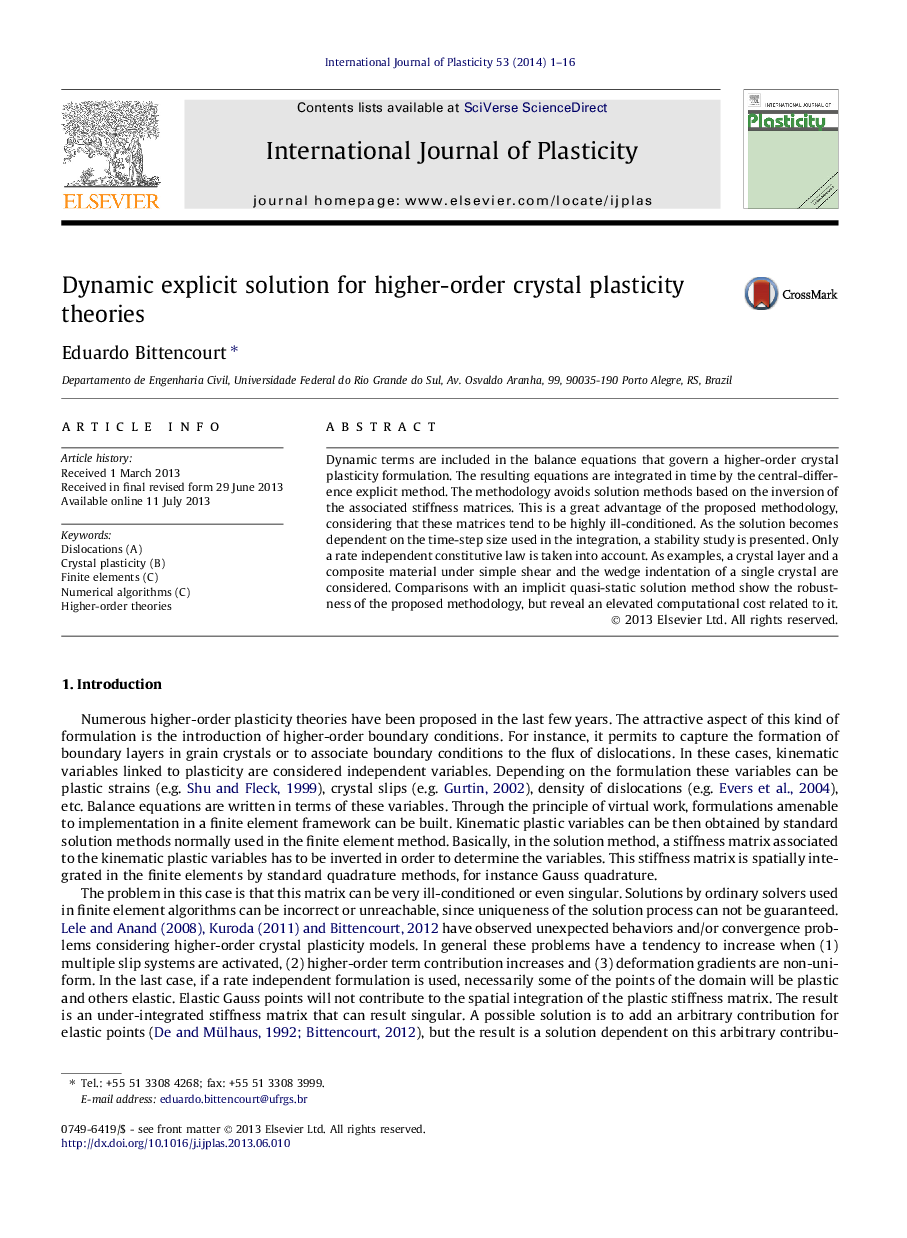| Article ID | Journal | Published Year | Pages | File Type |
|---|---|---|---|---|
| 786189 | International Journal of Plasticity | 2014 | 16 Pages |
•New higher-order crystal plasticity algorithm is proposed.•Explicit method is proposed in order to avoid inversion of stiffness matrices.•Algorithm is simple and robust.•Good correlation is obtained with analytical solutions and discrete dislocation solutions.•Size effect in nanoindentation is qualitatively captured.
Dynamic terms are included in the balance equations that govern a higher-order crystal plasticity formulation. The resulting equations are integrated in time by the central-difference explicit method. The methodology avoids solution methods based on the inversion of the associated stiffness matrices. This is a great advantage of the proposed methodology, considering that these matrices tend to be highly ill-conditioned. As the solution becomes dependent on the time-step size used in the integration, a stability study is presented. Only a rate independent constitutive law is taken into account. As examples, a crystal layer and a composite material under simple shear and the wedge indentation of a single crystal are considered. Comparisons with an implicit quasi-static solution method show the robustness of the proposed methodology, but reveal an elevated computational cost related to it.
